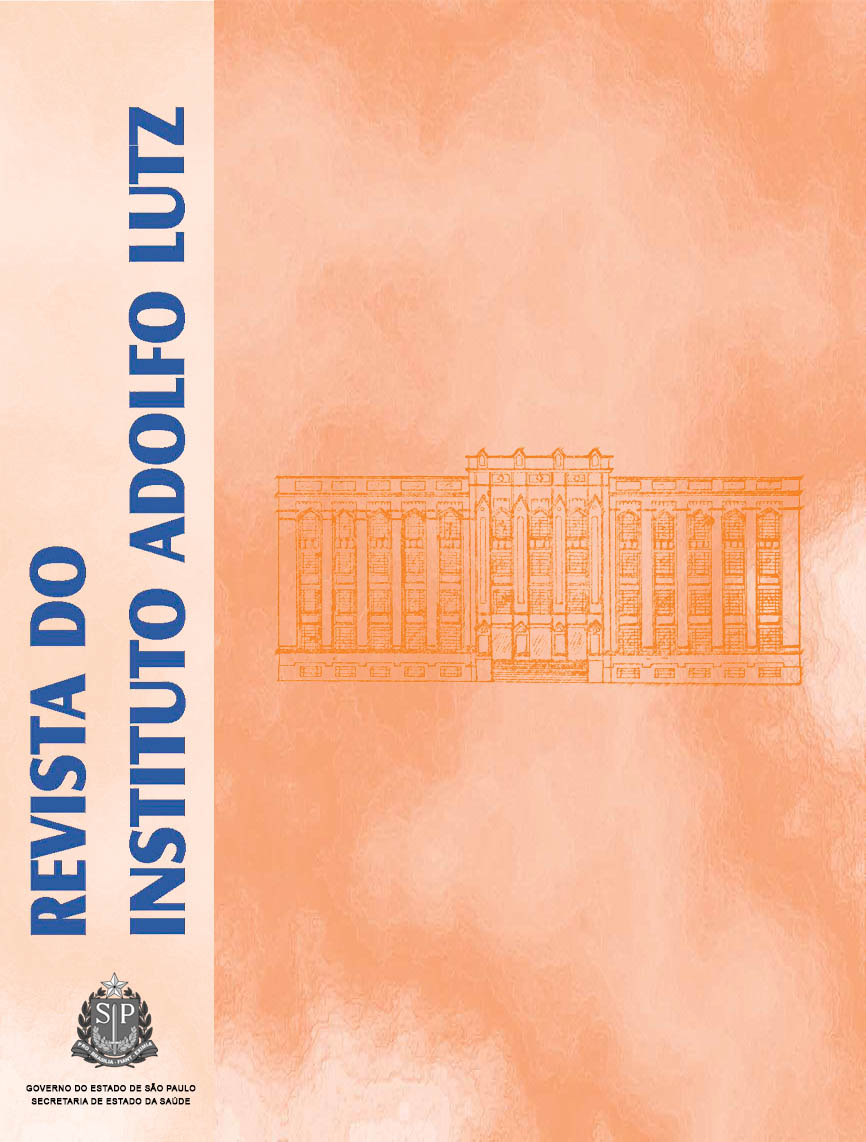Abstract
Careful examination of occurrence of mixed mycobacterial cultures is important because most of them include at least one pathogenic agent. Among 8, 036 mycobacterial cultures samples received between 1999 and 2000 at the Mycobacteria Laboratory of Instituto Adolfo Lutz, 21 (0.26%) classified as mixed cultures were selected for being investigated. For this, the use of 7H11 plate was included for colonies isolation. The isolated colonies were then subcultured into Lowenstein-Jensen media and incubated at 37ºC. The isolates were identified by phenotypic tests and by PCR restriction enzyme analysis of hsp65 gene. The analysis of those 21 mixed cultures showed the occurrence of M. tuberculosis and non-tuberculous mycobacteria (NTM) in eight samples, three cultures with two species of NTM , and ten with only one specie of mycobacteria. The results of this study suggest that microbiology technicians should be aware of mixed cultures and apply every practical method available to separate and to identify the involved mycobacteria species.
References
1. Bogner JR, Rüsch-Gerdes S, Mertenskötter T, Loch O, Emminger C, Baumgarten R, et al. Patterns of Mycobacterium avium culture andPCR positivity in immunodeficient HIV-infected patients: Progressionfrom Localized to Systemic Disease. Scand J Infect Dis 1997; 29:579-584.
2. De Smet KAL, Hellyer TJ, Khan AW, Brown IN, Ivanyi J. Genetic andserovar typing of clinical isolates of the Mycobacterium avium-intracellulare complex. Tubercle Lung Dis1996; 77: 71-6.
3. Gross WM, Hawkins JE. Mixed micobacterial cultures. Clin Microbiol Newsletter 1990, 12(3): 20-3
4. Kiehn TE, Cammarata R. Laboratory diagnosis of mycobacterial infections in patients with acquired immunodeficiency syndrome. JClin Microbiol 1986; 24: 708-11.
5. Tsukamura M, Mizuno S, Murata H. Occurrence of Mycobacterium tuberculosis and strains of the Mycobacterium avium-M. intracellulare complex together in the sputum of patients with pulmonary tuberculosis. Tubercle 1981; 62: 43-6.
6. Young LS, Inderleid CB, Berlin O George, Gottlieb MS. Mycobacterial infections in AIDS patients with an emphasis on the Mycobacterium avium complex. Rev Infect Dis 1986; 8: 1024-33.
7. Suzuki K, Kimoto T, Tsuyugushi K, Matsumoto H, Niimi A, Tanaka E,et al. Modification of results of drug susceptibility tests by coexistenceof Mycobacterium avium complex with Mycobacterium tuberculosisin a sputum sample: case report and experimental considerations. JClin Microbiol 1998; 36 (9): 2745-7.
8. Tsukamura M. Identification of mycobacteria. Tubercle 1967; 48:311-8.
9. Silva EAM, Telles MAS, Fragetti MC Associação de tuberculose e micobacteriose pulmonar: relato de um caso. J Pneumol 1989; 15:220-2.
10. Kent PT, Kubica GP. Public Health Mycobacteriology - A guide forlevel III Laboratory. Atlanta, Centers for Disease Control, 1985 (publication nº 86-216546)
11. Monteiro PHT, Martins MC, Ueki SYM, Giampaglia CMS, TellesMAS. Cord formation and colony morphology for the presumptive identification of Mycobacterium tuberculosis complex. Brasilian JMicrobiol 2003; 34: 171-4.
12. Watanabe AH, Credidio RA, Giampaglia CMS, Martins MC, Ferrazoli L,et al. Viabilidade das cepas de micobactérias conservadas à temperatura ambiente e à -70ºC. Bol Inst Adolfo Lutz 2003; 13(2): 24-5.
13. Blanco RM, Inumaru VTG, Martins MC, Giampaglia CMS, Ueki SYM, Chimara E, et al. Estratégias para a identificação de espécies do complexo M. fortuitum. Rev Inst Adolfo Lutz 2002; 61(2): 23-8.
14. Collins CH, Grange JM, Yates MD. Tuberculosis Bacteriology. Organization and Practice 2nd ed. London, England: Butterworth Heinemann; 1997.
15. Ministério da Saúde. Fundação Nacional da Saúde. Centro de Referência Professor Hélio Fraga. Manual de Bacteriologia da tuberculose. 2a. ed.Rio de Janeiro; 1994.
16. Telenti A, Marchesi F, Balz M, Bally F, Bottger EC, Bodmer T. Rapid identification of mycobacteria to the species level by polymerase chain reaction and restriction enzyme analysis. J Clin Microbiol 1993;31: 175-8.

This work is licensed under a Creative Commons Attribution 4.0 International License.
Copyright (c) 2005 Instituto Adolfo Lutz Journal
